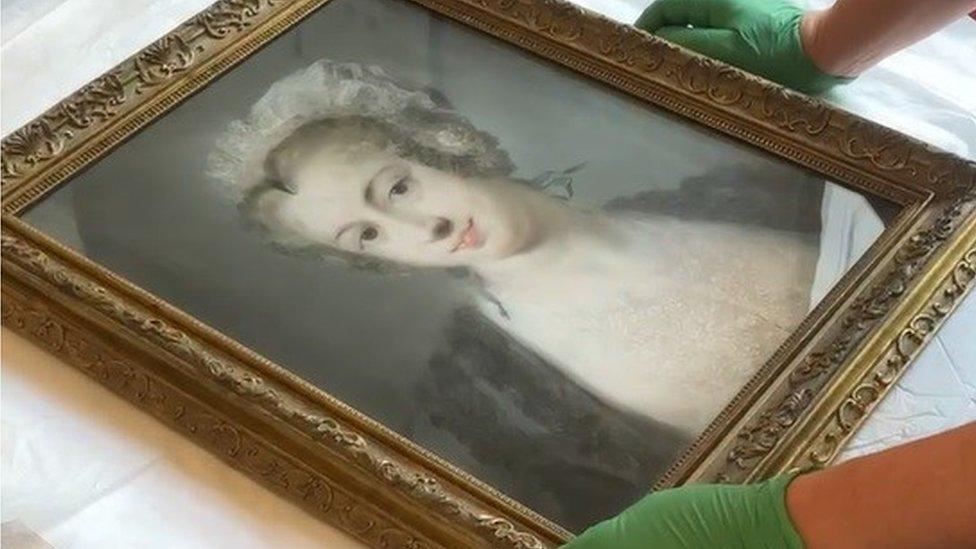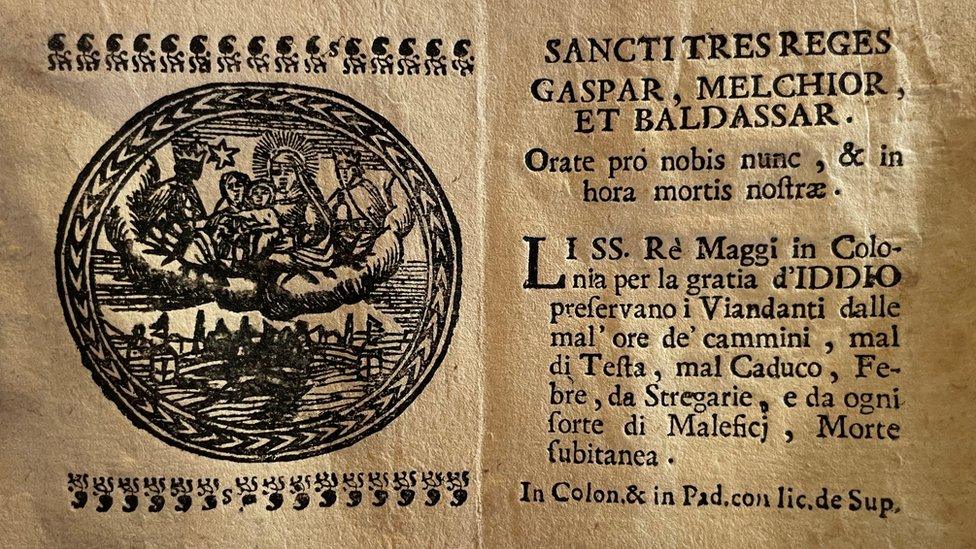Rosalba Carriera: Tatton portrait revealed as Venetian artist's work
- Published

Tatton Park said the "very fragile" work had undergone conservation work
A "very fragile" portrait which has not been on show for more than 35 years has been found to be by "one of the most successful female artists of any era".
The Portrait of a Tyrolese Lady had been in the collection at Cheshire's Tatton Park since the 18th Century, but had not been confirmed as an original.
The discovery of a prayer card in its frame has led to it being attributed to Venetian artist Rosalba Carriera.
Collections manager Vicky Rowbotham said it was an "exciting discovery".
The Tatton Park estate, near Knutsford, was once the home of the aristocratic Egerton family and the work was believed to have entered their collection in the mid-18th Century via Samuel Hill, the wealthy uncle of the property's then-master Samuel Egerton.
It was on display at Tatton Hall, part of the estate bequeathed to the National Trust in 1958, until 1987, when it was taken down to allow for redecoration.

Ms Rowbotham said works in pastel were "very delicate and this one is no exception"
A Tatton Park representative said the attribution for the work, which was created between the 1720s and 1730s, came after the estate was approached by The Frick Collection, an art museum in New York which had been researching works by Carriera and had found it listed in the National Trust's inventory.
They said Carriera was born in Venice in the late 17th Century at a time when being an artist was frowned upon, particularly for women.
She became a painter of scenes for snuff box lids before moving on to portrait miniatures.
The representative said her talent meant she was in demand in the Royal Courts and by the Grand Tour tourists flocking to Venice, though her works were sometimes considered risqué due to the "delicate lace coverings" on the subject's clothing "only just saving their modesty".
Ms Rowbotham said Carriera "became integral in popularising the use of pastels and as an initiator of the Rococo style and is remembered as one of the most successful female artists of any era".
'No exception'
The representative said The Portrait of a Tyrolese Lady had previously been thought to be an original work by Carriera, but there was a belief it might also be a copy.
However, the discovery of a Santini card, a small prayer document traditionally used by Roman Catholics, hidden in the back of the strainers helped The Frick's Deputy Director and Peter Jay Sharp Chief Curator Xavier Salomon confirm its authenticity.
"When Rosalba prepared her work for export, she would hide a Santini prayer... tucked into the back of the frames, for blessings for a safe passage," Ms Rowbotham said.
"Over time, these fragile bits of paper often became lost or separated from her works.
"The discovery of one still in situ at Tatton was a real find."

The discovery of a Santini card in the frame helped researchers confirm the piece as a Carriera original
She said the "very fragile" piece had undergone conservation work to stabilise the surface, frame and glass.
It has gone on display in the hall's Yellow Drawing Room, where it was originally hung, ahead of the seasonal closure of Tatton Park and will be displayed again during 2024, before returning to storage.
"Works in pastel are very delicate and this one is no exception," Ms Rowbotham said.
"It is a beautiful piece which shows elegance and sophistication and we are extremely pleased to be able to display the work and tell Carriera's story."

Why not follow BBC North West on Facebook, external, X, external and Instagram, external? You can also send story ideas to northwest.newsonline@bbc.co.uk, external